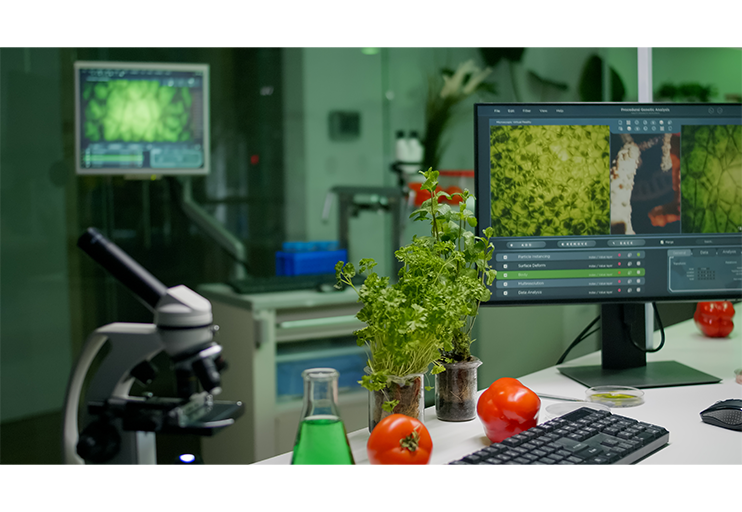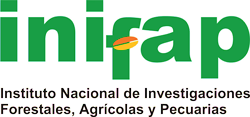Crop simulation models as a tool for agroecosystem analysis
DOI:
https://doi.org/10.29312/remexca.v16i4.3674Keywords:
agricultural systems, modeling, systems thinkingAbstract
Systems theory aims to contextualize and understand the environment of the human being, with the agroecosystem being a concept that tries to understand the productive processes of goods and services derived from the synergistic relationship between nature and society. The concept has been deconstructed in at least three generations of systems thinking, achieving a more objective and practical vision to be used as a unit of study in the design, management, and assessment of agroecosystems, so it is necessary to have tools that consider the complexity involved in the use of the concept. In this sense, crop models are a viable option to analyze the biophysical aspect of agroecosystems, considering the importance and necessary complementarity of the experiential introspective paradigm to understand the social environment that the cybernetics of production systems entails. This research aimed to theoretically describe the application of crop simulation models in the management and assessment of agroecosystems to contribute to their efficient development.
Downloads
References
Bibliografía
Aguirre, J. 2015. Dialéctica y filosofía primera. Lectura de la metafísica de Aristóteles. Vol. 115. Prensas de la Universidad de Zaragoza. España. 133 p.
Altieri M. A. 1995. El agroecosistema: determinantes, recursos, procesos y sustentabilidad. In: agroecología: bases científicas para una agricultura sustentable. 2da. Ed. Clades. Santiago, Chile. 22-31 pp.
Altieri, M. A. and Toledo, V. M. 2011. The agroecological revolution of Latin America: rescuing nature, securing food sovereignty, and empowering peasants. Journal of Peasant Studies. 38(1):587- 612. DOI:10.1080/03066150.2011.582947.
Arnold, J. G.; Sirinivasan, R.; Muttiah, R. S. and Williams, J. R. 1998. Large area hydrologic modeling and assessment. Part 1: model development. Estados Unidos. Journal of the American water resources association. 34(1):73-89. Doi:10.1111/j.1752-1688.1998.tb05961.x.
Asseng, S. S.; Martre, P.; Ewert, F. A.; Dreccer, M. F.; Beres, B. L. 2019. Model-driven multidisciplinary global research to meet future needs: the case for ‘improving radiation use efficiency to increase yield’. Asseng-Senthold-TUM. Crop Science. 59(1):843-849. Doi:10.2135/cropsci2018.09.0562.
Basso, B. B.; Cammarano, D. D.; Fiorentino, C. C. and Ritchie, J. T. 2013. Wheat yield response to spatially variable nitrogen fertilizer in Mediterranean environment. European journal of Agronomy. 51(1):65-70. Doi:10.1016/j.eja.2013.06.007.
Boccara, N. S. 2004. Cellular automata. Modeling complex systems. Springuer. New York, NY. 191-273 pp. Doi:10.1007/0-387-21646-4-6.
Brisson, N. N.; Gary, C. C.; Justes, E. E.; Roche, R. R. and Mary, B. B. 2003. An overview of the crop model STICS. European journal of Agronomy. 18(3-4):309-332. Doi: 10.1016/S1161-0301(02)00110-7.
Bustillos, L. G.; Martínez, J. P.; Osorio, A. F.; Salazar, L. S.; González, A. I. y Gallardo, L. F. 2009. Grado de sustentabilidad del desarrollo rural en productores de subsistencia, transicionales y empresariales, bajo un enfoque autopoiético. Venezuela. Revista Científica FCV-LUZ. 19(6):650- 658.
Candelaria, M. B.; Ruiz, R. O.; Gallardo, L. F.; Pérez, H. P.; Martínez, B. Á. y Vargas, V. L. 2011. Aplicación de modelos de simulación en el estudio y planificación de la agricultura, una revisión. México. Tropical and Subtropical Agroecosystems. 14(3):999-1010. https://www.redalyc.org/articulo.oa?id=93921493004.
Carvalho-Lopes, D. and Steidle-Neto, A. J. 2011. Simulation models applied to crops with potential for biodiésel production. Computers and electronics in agriculture. 75(1):1-9. Doi:10.1016/j.compag.2010.10.002.
Casanova-Pérez, L.; Martínez-Dávila, J.; López-Ortiz, S.; Landeros-Sánchez, C.; López-Romero, G. y Peña-Olvera, B. 2015. Enfoques del pensamiento complejo en el agroecosistema. Venezuela. Interciencia. 40(3):210-217. https://www.redalyc.org/comocitar.oa?id=33934728001.
Casanova, P. L.; Martínez, D. J. P.; López, O. S. and López, R. G. 2016. De von Bertalanffy a Luhmann: deconstrucción del concepto ‘agroecosistema’ a través de las generaciones sistémicas. Madrid, España. 1(35):60-74. https://www.redalyc.org/pdf/3112/311246905005.pdf.
Chenu, K. K.; Porter, J. R.; Martre, P.; Basso, B. B.; Chapman, S. C.; Ewert, F. A.; Bindi, M. M. and Asseng, S. S. 2017. Contribution of crop models to adaptation in wheat. Reino Unido. Trends in Plant Science. 22(6):472-490. Doi: 10.1016/j.tplants.2017.02.003.
Chiavenato, I. A. S. 1997. Teoría de sistemas. In: introducción a la teoría general de la administración. 4ta. Ed. McGraw-Hill. México. 725-761 pp.
Cruz-Bautista, P.; Martínez-Dávila, J. P.; Osorio-Acosta, F.; López-Romero, G.; Estrella-Chulin, N. y Regalado-López, J. 2017. Marco epistémico para estudiar los agroecosistemas. Revista Mexicana de Ciencias Agrícolas. 8(1):159-170. Doi:10.29312/remexca. v8i1.79.
Descartes, R. B. 2012. Meditaciones metafísicas. Trad. Méditations métaphysiques por Gálvez, J. G. Ecuador. 153 p.
Dupraz, C. L.; Wolz, K. J.; Lecomte, I. C.; Talbot, G. G. and Vincent, G. G. 2019. Hi-sAFe: a 3D agroforestry model for integrating dynamic tree crop interactions. Suiza. Sustainability. 11(8): 2293-2318. Doi:10.3390/su11082293.
Farquhar, G. D.; Caemmerer, S. V. and Berry, J. A. 1980. A biochemical model of photosynthetic CO2 assimilation in leaves of C 3 species. Alemania. Planta. 149(1):78-90. Doi:10.1007/BF00386231.
Galagovsky, L. R. y Aduriz-Bravo, A. 2001. Modelos y analogías en la enseñanza de las ciencias naturales el concepto de modelo didáctico analógico. Argentina. Enseñanza de las Ciencias. 19(2):231-242.
Gliessman, S. R. 2002. Agroecología: procesos ecológicos en agricultura sostenible. Centro Agronómico Tropical de Investigación y Enseñanza (CATIE). Ed. SR. Turrialba, Costa Rica. 359 p.
Harari, Y. N. 2015. Sapiens: una breve historia de la humanidad. Ed. Ilustrada. Natur & Kultur. Dinamarca. 496 p.
Hart, D. R. 1985. Conceptos básicos sobre agroecosistemas. Centro Agronómico Tropical de Investigación y Enseñanza (CATIE). Turrialba, Costa Rica. 156 p.
Hernández, X. E. 1977. Agroecosistemas de México. CP-ENA. México. Ed. 42 p.
Jones, J. W.; Tsuji, G. Y.; Hoogenboom, G.; Hunt, L. A. and Thornton, P. K. 1998. Decision support system for agrotechnology transfer. In: DSSAT. 3(7):157-177. Doi:10.1007/978-94-017-3624-4-8.
Jones, J. W.; Hoogenboom, G.; Porter, C. H.; Boote, K. J.; Batchelor, W. D. 2003. The DSSAT cropping system model. Reino Unido. European Journal of Agronomy. 18(3-4):235-265. Doi:10.1016/S1161-0301(02)00107-7.
Jones, J. W.; Antle, J. M.; Basso, B. B.; Boote, K. J. and Conant, R. T. 2017a. Toward a new generation of agricultural system data, models, and knowledge products: state of agricultural systems science. Agric. Syst. 155(1):269-288. Doi:10.1016/j.agsy.2016.09.021.
Jones, J. W.; Antle, J. M..; Basso, B.; Boote, K. J.; Conant, R. T.; Foster, I. T. & Wheeler, T. R. 2017b. Brief history of agricultural systems modeling. Reino Unido. Agricultural Systems. 155(1):240-254. Doi:10.1016/j.agsy.2016.05.014.
Kant, I. 2020. Crítica de la razón pura. Traducción de la obra ‘Kritik der reinen Vernunft’ por Alexis Padrón Alfonso. Verbum. España. 646 p.
Kephe, P. N.; Ayisi, K. K. and Petja, B. M. 2021. Challenges and opportunities in crop simulation modelling under seasonal and projected climate change scenarios for crop production in South Africa. South Africa. Agriculture and Food Security. 10(1):1-24. Doi:10.1186/s40066-020-00283-5.
Leiva, F. R.; Buitrago, J. Y.; Rodríguez, J. S. y Guerrero, L. C. 2008. Aproximación a la agricultura de precisión (AP) en el cultivo de maíz (Zea mays L.) en Colombia. In: F. R. Agricultura de precisión en cultivos transitorios. Leiva, F. R. Ed. Universidad Nacional de Colombia. Bogotá, Colombia. 43-71 pp.
Lobell, D. B. and Asseng, S. S. 2017. Comparing estimates of climate change impacts from process-based and statistical crop models. Reino Unido. Environmental Research Letters. 12(1):3-11. Doi:10.1088/1748-9326/aa518a.
Lovelock, J. E. 1985. Gaia: una nueva visión de la vida sobre la Tierra. Orbis. Barcelona, España. 185 p.
Luhmann, N. 2006. La sociedad de la sociedad. Herder. Universidad Iberoamericana. México, DF. 1024 p.
Marten, G. G. and Rambo, A. T. 1988. Guidelines for writing comparative case studies on Southeast Asian rural ecosystems. In: agroecosystem research for rural development. Rerkasem, K. K. and Rambo, A. T. Ed. Multiple Cropping Centre. Chiangmai University. Tailandia. 263-285 pp.
Maturana, H. R. y Varela, F. G. 2004. De máquinas y seres vivos: autopoiesis: la organización de lo vivo. 6ta. Ed. Universitaria. Luhmann. Santiago, Chile. 137 p.
Montaldo, B. P. 1982. Agroecología del trópico americano. IICA. San José, Costa Rica. 11 p.
Palacios, V. C. y Dávila, J. P. M. 2023. El agroecosistema como sistema social. Venezuela. Interciencia. 48(2):102-108. https://www.interciencia.net/wp-content/uploads/2023/02/05-6922-E-Martinez-Davila-v48n2-7.pdf.
Platas-Rosado, D. E.; Vilaboa-Arroniz, J.; González-Reynoso, L.; Severino-Lendechy, V. H.; López-Romero, G. y Vilaboa-Arroniz, I. 2017. Un análisis teórico para el estudio de los agroecosistemas. México. Tropical and Subtropical Agroecosystems. 20(3):395-399. https://www.redalyc.org/articulo.oa?id=93953814017.
Sartre, J. P. 2006. El existencialismo es un humanismo. Vol. 37. FPE. Universidad Nacional Autónoma de México (UNAM). México, DF. 36 p.
Sandoval, C. C. A. y Villanueva, J. J. A. 2009. Scope, sections, policies and language issues in TSA. México. Tropical and Subtropical Agroecosystems. 10(2):1-2. https://www.revista.ccba.uady.mx/ojs/index.php/TSA/article/download/354/68.
Sargent, R. G. 2013. Verification and validation of simulation models. Reino Unido. Journal of Simulation. 7(1):12-24. Doi:10.1057/jos.2012.20.
Tomás, A. S. 2020. Suma de teologia: [primeira parte-questões 84-89]. EDUFU. Brasil. 279 p.
Vilaboa, J. A.; Díaz, P. R.; Ortega, E. J. y Rodríguez, M. C. A. 2006. Productividad y autonomía en dos sistemas de producción ovina: dos propiedades emergentes de los agroecosistemas. Venezuela. Interciencia. 31(1):37-44. http://ve.scielo.org/scielo.php?script=sci-arttext&pid=S037818442006000100008&lng=es&nrm=iso.
Vilaboa-Arroniz, J.; Díaz-Rivera, P.; Ruiz-Rosado, O.; Platas-Rosado, D. E.; González-Muñoz, S. y Juárez-Lagunes, F. 2009. Caracterización socioeconómica y tecnológica de los agroecosistemas con bovinos de doble propósito de la región del Papaloapan, Veracruz, México. Tropical and Subtropical Agroecosystems. 10(1):53-62. https://www.redalyc.org/articulo.oa?id=93911243005.
Von-Bertalanffy, L. 1976. Teoría general de los sistemas. México. Fondo de Cultura Económica (FCE). México, DF. 336 p.
Weitz, R. 1971. Regional planning for rural development in developing countries: rural development in a changing world. London, England. 587 p.
Williams, J. R.; Jones, C. A.; Kiniry, J. R. and Spanel, D. A. 1989. The EPIC crop growth model. Estados Unidos. Transactions of the ASAE. 32(2):0497-0511. Doi:10.13031/2013.31032.

Published
How to Cite
Issue
Section
License
Copyright (c) 2025 Revista Mexicana de Ciencias Agrícolas

This work is licensed under a Creative Commons Attribution-NonCommercial 4.0 International License.
The authors who publish in Revista Mexicana de Ciencias Agrícolas accept the following conditions:
In accordance with copyright laws, Revista Mexicana de Ciencias Agrícolas recognizes and respects the authors’ moral right and ownership of property rights which will be transferred to the journal for dissemination in open access. Invariably, all the authors have to sign a letter of transfer of property rights and of originality of the article to Instituto Nacional de Investigaciones Forestales, Agrícolas y Pecuarias (INIFAP) [National Institute of Forestry, Agricultural and Livestock Research]. The author(s) must pay a fee for the reception of articles before proceeding to editorial review.
All the texts published by Revista Mexicana de Ciencias Agrícolas —with no exception— are distributed under a Creative Commons License Attribution-NonCommercial 4.0 International (CC BY-NC 4.0), which allows third parties to use the publication as long as the work’s authorship and its first publication in this journal are mentioned.
The author(s) can enter into independent and additional contractual agreements for the nonexclusive distribution of the version of the article published in Revista Mexicana de Ciencias Agrícolas (for example include it into an institutional repository or publish it in a book) as long as it is clearly and explicitly indicated that the work was published for the first time in Revista Mexicana de Ciencias Agrícolas.
For all the above, the authors shall send the Letter-transfer of Property Rights for the first publication duly filled in and signed by the author(s). This form must be sent as a PDF file to: revista_atm@yahoo.com.mx; cienciasagricola@inifap.gob.mx; remexca2017@gmail.
This work is licensed under a Creative Commons Attribution-Noncommercial 4.0 International license.


